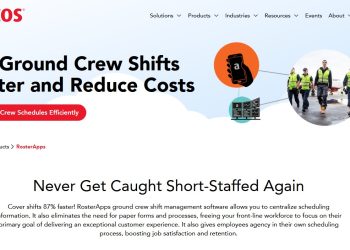Embarking on a new job can be both an exhilarating and nerve-wracking experience for employees. The initial days are crucial as they set the tone for their journey ahead in the organization. A well-structured and engaging onboarding process not only eases the nerves of new hires but also significantly impacts their perception and long-term commitment to the company. An effective onboarding program is much more than a mere introduction to the workplace; it’s a robust foundation for a mutually rewarding relationship between the employee and the organization.
The importance of a positive onboarding experience cannot be overstated. Statistics reveal that organizations with a strong onboarding process improve new hire retention by 82% and productivity by over 70%. The onboarding phase is a critical opportunity for the employers to win the trust and loyalty of their employees by investing in a comprehensive, interactive, and empathetic onboarding experience. Through a well-orchestrated onboarding journey, organizations can ignite the enthusiasm, confidence, and the sense of belonging in their new hires, propelling them towards a fruitful and enduring tenure.
Planning the Onboarding Process
The journey towards creating an enriching onboarding experience commences with meticulous planning that aligns with both the organizational goals and the needs of the new hires. Setting clear objectives for the onboarding program is crucial as it steers the design and execution towards desired outcomes like faster productivity, culture assimilation, and long-term retention. It’s also paramount to customize the onboarding experience to cater to the diverse backgrounds and roles of the new hires. A well-thought-out plan should encompass a blend of informational sessions, training, and interactive activities that will equip the newcomers with the essential tools and knowledge required for their roles. Additionally, preparing for a welcoming and informative first day is pivotal, as the initial impression often leaves a lasting impact. Ensuring that the new hires feel welcomed, valued, and well-informed from day one can significantly influence their perception of the organization.
Leveraging available resources and technologies can further enhance the planning process. Digital onboarding platforms can be utilized to streamline the administrative tasks and provide a centralized hub of information, making the process smoother for both the organization and the new hires. Moreover, planning should also involve creating a feedback loop to continually assess and refine the onboarding process. This proactive approach not only enriches the experience for future hires but also fosters a culture of continuous improvement within the organization. By investing ample time and resources in planning an outstanding onboarding program, companies lay down a robust foundation for nurturing a positive and productive relationship with their new hires.
Key Components of an Effective Onboarding Program
The initial phase of orientation and training is a cornerstone in the onboarding journey. It’s during this time that new hires are immersed in the company’s culture and values, setting the stage for their alignment with the organization’s ethos. Additionally, job-specific training and expectations are laid down, empowering the new hires to transition smoothly into their roles. This phase is also ripe for team bonding activities which can be facilitated through icebreakers, group exercises, or out-of-office team-building events. Such activities are instrumental in fostering a sense of camaraderie and belonging among the new hires and the existing team members. Inter-departmental meet-and-greets can further broaden their network and understanding of the organizational structure and functions.
Mentorship and networking are subsequent key components that significantly influence the new hire’s integration and growth within the organization. Assigning a mentor can provide the new hires with a go-to person for guidance, easing their acclimatization to the new environment. Moreover, encouraging networking and social interaction among employees cultivates a supportive and collaborative atmosphere. This not only expedites the new hires’ understanding and adaptation to the organizational culture but also ignites meaningful professional relationships that can be beneficial in the long run.
Feedback and evaluation are critical in understanding the effectiveness of the onboarding program and the progress of the new hires. Regular check-ins provide an opportunity for new hires to voice their concerns, seek clarity, and receive constructive feedback on their performance. This two-way communication channel is valuable in making timely adjustments and ensuring that the new hires are on the right track towards achieving their goals. A well-structured evaluation process will also offer insights into the areas of improvement for both the new hires and the onboarding program itself, contributing to the continuous enhancement of the onboarding experience.
Common Pitfalls and How to Avoid Them
Creating an enriching onboarding experience is not without its challenges, and being cognizant of common pitfalls can significantly aid in devising a more effective program. One such pitfall is the lack of follow-up post the initial orientation phase, which can leave new hires feeling adrift. Establishing a consistent follow-up schedule can help in addressing this issue, ensuring that new hires are progressing well and addressing any concerns promptly. Another common error is overloading information on new hires, which can be overwhelming and counterproductive. It’s essential to pace the information delivery and blend it with interactive sessions to ensure better retention and understanding. Lastly, neglecting company culture assimilation can lead to a misalignment of values and expectations, potentially causing friction down the line. It’s crucial to incorporate activities and discussions around the company culture throughout the onboarding process, helping new hires to align with the organizational ethos and fostering a harmonious work environment. By being aware of and actively mitigating these pitfalls, organizations can significantly enhance the efficacy and impact of their onboarding program.
Conclusion
The endeavor to craft an engaging onboarding journey begins with a well-structured planning process, ensuring a warm welcome and a smooth transition for the new hires into their respective roles. The essence of a rewarding onboarding experience lies in a robust orientation and training phase, complemented by activities that foster team bonding and a deeper understanding of the company culture. Additionally, awareness and mitigation of common pitfalls such as lack of follow-up and information overload are crucial to enhance the efficacy of the onboarding program. Through a meticulous approach encompassing these key aspects, organizations can significantly elevate the onboarding experience, setting a positive trajectory for the new hires and fostering a conducive environment for their growth and contribution.






